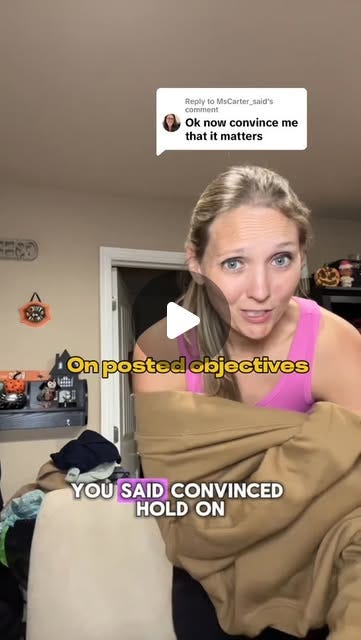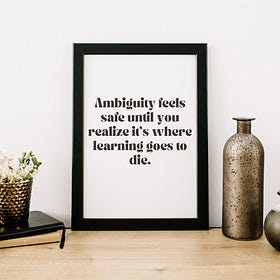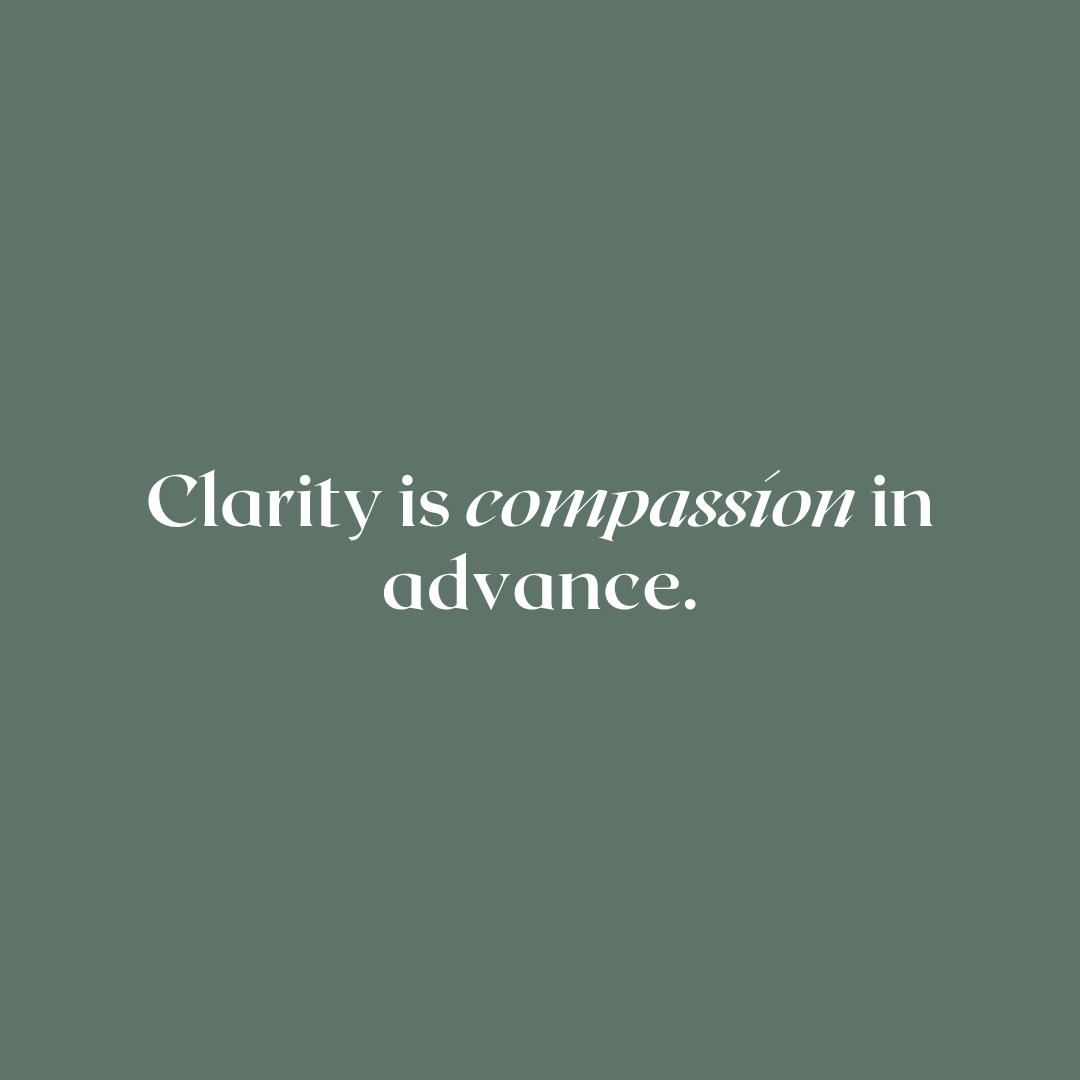Making Professional Learning Outcomes Come Alive
An additional rep on the clarity rehearsal
If you’ve ever led a professional learning session, you’ve probably wrestled with this moment:
The slide goes up — “Learning Outcomes.”
You read them aloud because you’re supposed to.
Everyone nods politely and checks their email.
We tell ourselves it’s about clarity, but too often, outcomes sit flat on the slide — sterile, disconnected, lifeless. They exist to prove alignment, not to drive transformation.
But clarity isn’t about posting the objective. It’s about making meaning visible.
(See our discussions about posting lesson objectives on the Instagram or TikTok)
That’s what this week’s Clarity Rehearsal is all about — learning how to turn abstract goals into tangible, felt experiences. Whether you’re coaching, teaching, or leading a PD, outcomes aren’t there to decorate the agenda. They’re there to ignite focus.
The Clarity Rehearsal: Do the Exit Ticket
A few months ago, I watched a coaching conversation derail. The teacher wasn’t defensive or anything. In fact, she was smiling, nodding, and agreeing to all of the suggestions. There was one big problem: It wasn’t clear.
1. Treat Outcomes as Navigation, Not Decoration
Outcomes should work like trail markers, not museum plaques.
Instead of:
“Participants will understand the 4 components of formative assessment.”
Try:
“By the end, you’ll be able to recognize formative assessment in action, name what makes it effective, and adjust your plan accordingly.”
Then, actually use them. Pause throughout the session and ask:
“Where are we on this map?”
This subtle check-in builds a form of orientation.
2. Turn Each Outcome Into an Experience
Don’t announce outcomes; embody them. If one of your goals is to build trust in feedback, consider creating a simulation where participants coach a “resistant” teacher. If the goal is about formative assessment, have participants actually take the assessments and reflect on it.
The more the learning outcome shows up as an experience, the more likely it is to stick. The brain remembers what it does, not what it’s told.
3. Rewrite Outcomes as Questions
Real understanding comes from inquiry, not instruction. Instead of reading outcomes aloud, flip them into curiosity triggers:
“What makes feedback trustworthy?”
“How do we shift from evaluation to coaching?”
At the end, have participants answer these questions and rewrite the original outcomes in their own words. This builds mental construction.
4. Pair Cognitive and Emotional Outcomes
Cognitive clarity gets you precision. Emotional clarity gets you movement.
For every technical skill, name the felt shift you want.
Example:
Cognitive: Identify the 3 components of effective feedback.
Emotional: Feel more confident giving constructive feedback.
Halfway through, pause and ask:
“What’s shifting in your confidence or clarity right now?”
5. Visualize the Arc
Turn your outcomes into a journey map or playlist, rather than a bulleted list.
Each “stop” or “track” represents an outcome. As you move through, let participants mark progress — with sticky notes, emojis, or even a physical walk across the room.
As our clarity grows, we believe it more deeply.
6. Reflect to Reinforce
At the start, have participants rate themselves on each outcome (“Where am I with this?”). At the end, rate again.
Ask:
“What do you now understand, feel, or see differently than before?”
That reflection IS the rehearsal. It transforms knowledge into ownership.
Example: Least Invasive Corrections PD
Before the Session
“Where am I right now?”
Use the scale below to rate yourself on how consistently and calmly you apply least invasive corrections in your classroom.
1 – Reactive: I tend to correct in the moment to regain control. My emotions often drive the response. I use the same move for every situation.
2 – Emerging Awareness: I know several correction strategies but struggle to choose calmly in real time. I can name the ladder (nonverbal → consequence) but default to extremes.
3 – Practicing Consistency: I intentionally start with nonverbals or positive group corrections. I can adjust mid-stream when a move doesn’t land. Emotional tone is mostly steady.
4 – Emotionally Steady and Strategic: I select correction levels with discernment. My tone remains calm even when frustrated. Students see corrections as normal—not personal.
5 – Adaptive and Centered: I move seamlessly between correction types, matching the lowest necessary move to the situation. My presence regulates the room.
After the Session
“What’s shifted in my clarity, confidence, and constancy?”
Reflection Dimension
Confidence choosing the right correction Then (1 - 2 - 3 - 4 - 5) Now (1 - 2 - 3 - 4 - 5)
Emotional constancy under pressure Then (1 - 2 - 3 - 4 - 5) Now (1 - 2 - 3 - 4 - 5)
Which correction move feels most natural to you? Which requires the most emotional neutrality?
How did your definition of “invasive” change during this session?
What judgment cues will help you know when to escalate versus hold steady?
How might you rehearse calm body language and tone the same way you rehearse words?
7. Bridge to Real Life
If an outcome ends at the session, it’s dead on arrival. Send a follow-up that begins:
“You said you’d be able to ___. How’s that going?”
Outcomes are only alive when they keep breathing in practice.
The Bigger Shift
When we treat learning outcomes as performance requirements, we signal: This is about checking boxes. When we treat them as rehearsal cues, we signal: This is about practice and transformation.
Clarity isn’t about simplifying. It’s about seeing. It’s the rehearsal where meaning meets motion — where we practice saying, showing, and believing the same thing.
Call-to-Action
Try this: Take your next PD slide deck. Find the “Outcomes” slide.
Now rewrite them as a:
1️⃣ a question,
2️⃣ an experience, and/or
3️⃣ a reflection prompt.
Then watch the room shift from compliance to curiosity.




